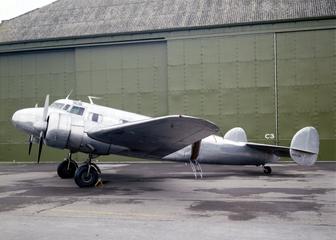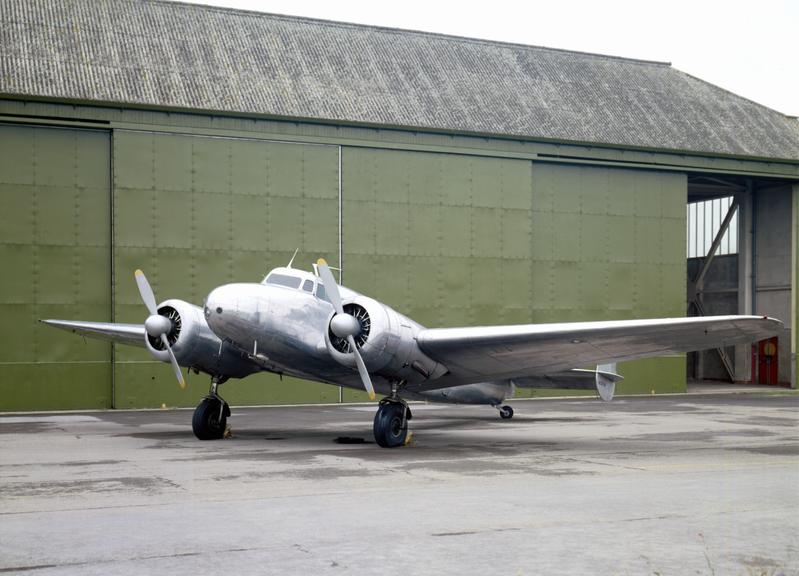
Lockheed 10A Electra, serial no 1037, 1935.
1935





Lockheed 10A Electra aircraft, serial no 1037, by Lockheed Aircraft Corporation, Burbank, Los Angeles county, California, United States, 1935
This aircraft, built in 1935, was the first twin-engined airliner built by the Lockheed company. The Boeing 247, Douglas DC-2 and Lockheed 10 were the first modern airliners – they were all-metal aeroplanes with retractable undercarriages, flaps and variable-pitch airscrews. When they were introduced on the American internal airlines from 1933, they rapidly replaced the older generation of biplanes and tri-motor airliners. Their cruising speeds of around 150 mph offered major savings over the railroads, and the safety and regularity of airline operations was greatly improved by the introduction of these new types. Passenger traffic on the airlines increased rapidly as a result, and flying became a routine habit for the American business person.
The ten-seat Electra also found a good market overseas and was the first of the modern American airliners to be used in Britain. A fleet of six was bought by British Airways Ltd. In 1937, and one was used in September 1938 by Prime Minister Neville Chamberlain to fly to Munich for one of his “summit conferencse” with Adolf Hitler.
The Science museum’s Lockheed-10 was originally delivered to Eastern Airlines at Miami on 24 September 1935 as NC 14959. Eastern specifieed Wright R-975 engines for their Electras, so s/n 1037 was built as a Model 10B. After two years, Eastern found the Electras too small for its main routes and sold NC 14959 to Boston Maine Airways (later renamed Northeast Airlines) in November 1937. They converted it in 1938 to a Model 10A by fitting Pratt & Witney R-985 engines, which it still has.
In 1942, the Electra was transferred to the U.S. Civil Aeronautics Administration, and re-registered NC 243. They retired it around 1949, and it was re-registered to a dealer in Oklahoma as N 5171N. In March 1951 the Electra was delivered to Manhattan, Kansas, to a local air-service operator, Capitol Air Services, who owned it for the next 28 years. They flew it regularly to many of the major cities of the central and eastern United States, and it also had at least one period of service in California.
In July 1979, Mr Dolph Overton acquired the aircraft and had it re-furbished for display in the Wings & Wheels Museum in Orlando, Florida. This Museum closed in 1981, and most of the exhibits were sold by auction in December. The Electra remained unsold, and the Science Museum then negotiated to purchase it from Mr. Overton.
It was decided, after studying the costs and risks of shipping it to England, that it would be better to fly the aircraft from Florida, and a contract was given to Aces High Ltd of Fairoaks Aerodrome who had considerable experience of this sort of operation. Their Technical Director, Mr. R. F. (Robbie) Diver, prepared the Electra for flight and fitted long-range tanks in the cabin. He then shared with ferry pilot Vaughan Jones the 6100 mile flight , via Goose Bay, Sondre Stromfjord, Reykjavik and Shannon, which took some 50 hours flying time. This is only the second Lockheed Electra to have flown the Atlantic, the first was NR 16059 flown by Richard Merrill and John Lambie in May 1937 to bring the newsreel film of he “Hindenburg” airship disaster to Europe.
The Electra is now, appropriately, re-registered G-L10A.

1935
1935
1935
1935
1935
1935
1935
1935
1935
1935
1935
1935
1935
1935
1935
1935
1935
1935
1935
1935




